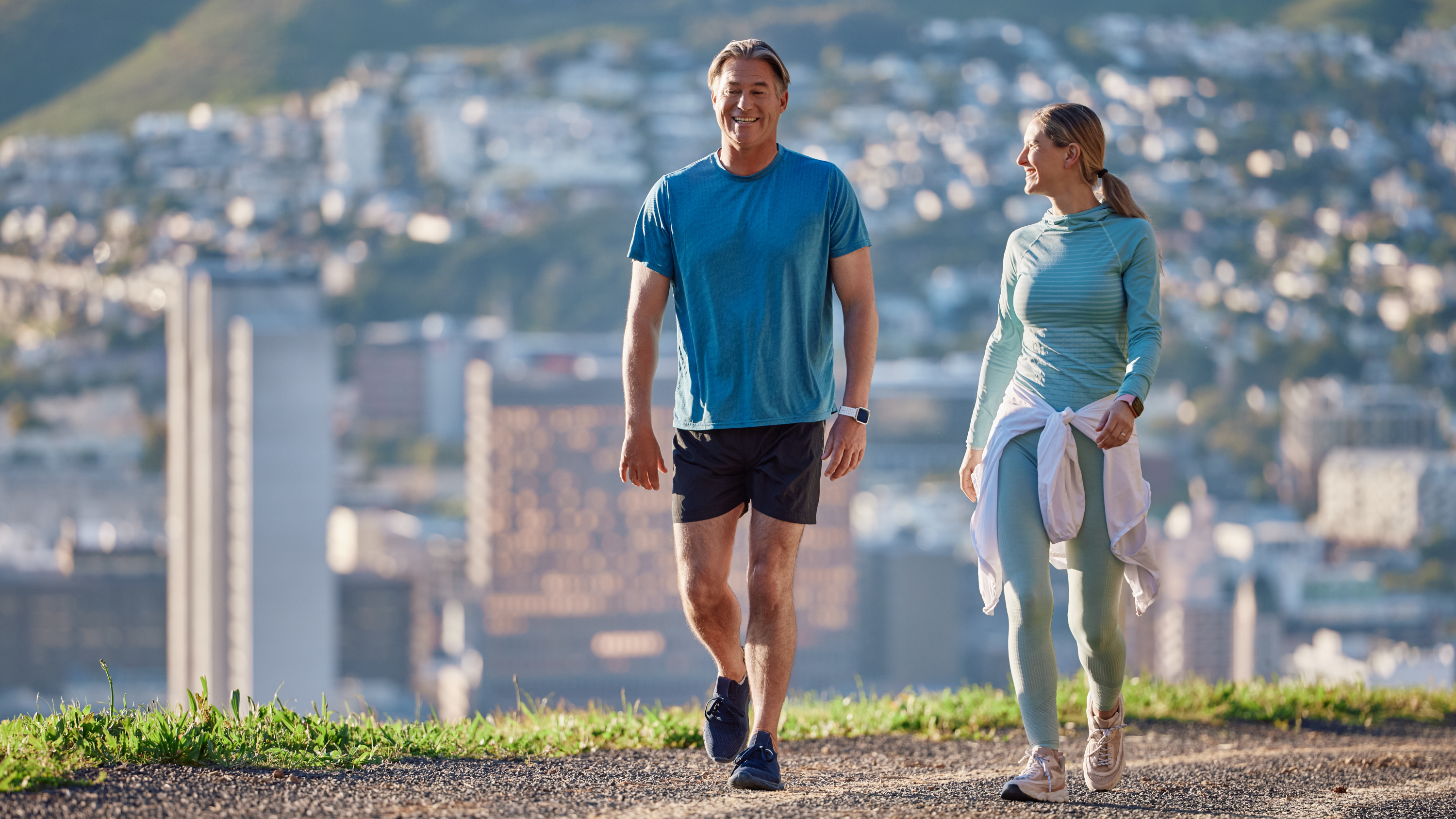I tried this power walking method to boost my heart rate and reduce my stress levels — and I’m hooked

Power walking has been around long before TikTok made it cool. It’s been found to be good for your bones, reduce your risk of high blood pressure, burn calories, and improve your mental health.
Unlike running or jogging, walking has a low impact on your joints, so it is suitable for most people, plus you don’t need any fancy equipment to get a good workout — just a comfortable pair of sneakers will do.
How to power walk
Power walking, also known as brisk walking, is exactly what it sounds like — you’re walking at a faster pace, probably an effort of six or seven out of ten. An easy way to tell if you’re walking quickly enough is the talk test — imagine you’re walking with a friend, at the right pace you’d be able to hold a conversation, but you’d probably be a little breathless.
If you couldn’t speak without gasping for breath, you’re walking too fast. If you could easily talk like you would standing still, you’re not walking quickly enough.
If you couldn’t speak without gasping for breath, you’re walking too fast. If you could easily talk like you would standing still, you’re not walking quickly enough.
Alternatively, if you have one of the best fitness trackers strapped to your wrist, another way to check your pace is by looking at your heart rate. When power walking, your heart rate should be 50 to 85 per cent of your maximum heart rate.
Your maximum heart rate is 220 beats per minute (bpm) minus your age in years. Therefore, for a 30-year-old, the calculation would be 220 - 30 = 190 bpm. To determine the range you should be walking in, multiply this number by 0.5 to find 50 percent of your maximum heart rate (so 95 bpm for a 30-year-old), and by 0.85 to see 85 percent (162 bpm). Keep an eye on your heart rate as you walk and try and keep it in this zone.

What are the benefits of power walking?
We’ve explored the effects of 30 minutes of power walking on the body in more detail here, but in simple terms, power walking is an excellent form of cardio. You’re working your entire body as you walk — just make sure you think bout engaging your core to stabilize your torso, and swinging your arms as you walk.
Get instant access to breaking news, the hottest reviews, great deals and helpful tips.
Not only does power walking raise your heart rate and burn calories, but studies have found this form of walking can reduce your blood pressure and your risk of high cholesterol and diabetes.

I tried this power walking method to boost my heart rate and reduce my stress levels — and I’m hooked
As Tom’s Guide’s fitness editor, I’m no stranger to a walking challenge — you can read what happened when I tried the Japanese walking method for a week here, as well as when I took on the 12-3-30 walking workout for a month. Yet next on my list was a 20-minute power walking workout, with a five-minute warm-up and cool down. As always, I set up the workout on my Apple Watch 10 beforehand — here’s how to build a workout on your Apple Watch.
During the power walking workout itself, I used the 1-2 step method — this refers to a technique where you swing your arms in a 1-2 rhythm to match your steps. I found myself counting “one, two” throughout the workout, focusing on swinging my arms, with a 90-degree bend in my elbow, as I took a big step forward each time, striking the floor with my heel and rolling to the ball of my foot.
I found the counting and the arm swing helped me take longer strides, working my lower body harder as I pushed myself forward.
Unlike going for a run, I wasn’t immediately out of breath, but I found myself working hard as my heart rate increased. I focused on my form, keeping my core engaged and my torso upright. I tend to tense through my head and neck as I push myself, so I thought about keeping my neck, shoulders, and back relaxed. My heart rate remained elevated throughout the 20-minute workout, but stayed at 50-60% of my maximum heart rate.
More importantly, I really enjoyed the power walking session. While it won’t be for everyone, the 1-2 rhythm was somewhat meditative, and I found myself tuning into my body and focusing on my walk. I use exercise as a way to reduce stress and improve my mental health, and this workout did just that.
If 20 minutes of brisk walking is too ambitious, why not mix intervals of brisk walking with intervals of slower walking to recover? The Japanese walking method involves three minutes of a brisk walk, followed by three minutes of a slower-paced walk to recover.
Remember, your brisk walking pace will be different from mine, and that the best workout for you is the one you enjoy the most. As always, if you’re new to exercise or you’re returning to workouts following an injury or pregnancy, it’s always a good idea to check in with a doctor before taking on a new workout routine.
More from Tom's Guide
- Forget running — 3 walking workouts that build lower body strength and burn calories
- I tried this 3-2-1 walking workout — and it boosted my energy level and my mood
- Walking for weight loss: what you need to know

Jane McGuire is Tom's Guide's Fitness editor, which means she looks after everything fitness related - from running gear to yoga mats. An avid runner, Jane has tested and reviewed fitness products for the past five years, so knows what to look for when finding a good running watch or a pair of shorts with pockets big enough for your smartphone. When she's not pounding the pavements, you'll find Jane striding round the Surrey Hills, taking far too many photos of her puppy.
You must confirm your public display name before commenting
Please logout and then login again, you will then be prompted to enter your display name.
